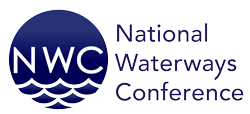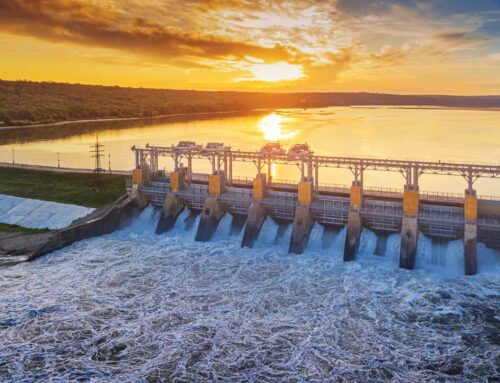NWC Federal Spotlight
March 1, 2022
Good afternoon NWC members,
As you may know now, NWC’s 2022 Legislative Summit is a go for April 25-26, 2022, in Washington, DC. We are concluding our final negotiations now with the site and will have a draft schedule available soon.
For those of you who are interested in Section 408 rulemaking, please reach out to me. We have formed a small working group to look at challenges within the program and address potential fixes. We will have our next call on Friday, March 18 at 11am ET. Additionally, NWC’s Flood Control Caucus meets tomorrow at 1:00pm ET to discuss potential comments on USACE’s National Levee Safety Program. And the next NWC Water Supply Caucus meeting is scheduled for Friday, March 18 at 2pm ET.
Beyond that, below are some items of interest. As always, if you have any questions or comments, please do not hesitate to reach out to me.
Best,
Julie Ufner, NWC
CEQ. CEQ SEEKS FEEDBACK on climate and economic justice screening tool. The Council on Environmental Quality (CEQ) published a request for information (RFI), seeking feedback on its beta version of the Climate and Economic Justice Screening Tool, which federal agencies will use to implement the J40 initiative. The function of the tool is to employ indicators to identify communities that have underinvestment in energy, transit, housing and water infrastructure, among other things. The RFI seeks input on a variety of issues, with responses due April 25, 2022, which CEQ will use to update the tool as needed and rollout to federal agencies to use. For more information, click here.
EPA/USACE. AGENCIES Select locations for 10 WOTUS roundtables nationally. On February 24, the U.S. Environmental Protection Agency (EPA) and USACE (the agencies) announced 10 roundtable discussions they intend to hold nationally. Each regionally focused roundtable will allow stakeholders to engage and discuss their experiences with definitions of WOTUS, including challenges and opportunities within their geographic areas. The locations are as follows: Amigos Bravos (Southwest); Arizona Farm Bureau (Southwest); Cahaba Brewing (Southeast); California Farm Bureau (West); Kansas Livestock Association (Midwest); Natural Resources Defense Council (Northeast); National Parks Conservation Association (Midwest); North Carolina Farm Bureau (Southeast); Regenerative Agriculture Foundation (Midwest) ; and the Wyoming County Commissioners Association / Montana Association of Counties / Idaho Association of Counties (West). The agencies plan to hold these roundtables virtually over the spring and summer. Unlike previous roundtables, where the agencies asked for individual nominations to participate in region-specific roundtable, the agencies requested that nominees submit a complete slate of proposed participants (up to 15) per regional event. In December 2021, the agencies proposed a new WOTUS definition, using a revised version of the 1986 regulations. On Feb. 7, NWC submitted robust comments to the Agencies that detailed our concerns with the proposed WOTUS rule. To read NWC’s comments, click here.
USACE. Changes at USACE headquarters. Ms. Stacey Brown, the Chief of the Programs Integration Division at Headquarters, will be moving to the Office of the Assistant Secretary of the Army (Civil Works) to become the Principal Deputy for Management and Budget (replacing Vance Stewart). A replacement for Ms. Brown has not yet been named. Mr. Eric Bush has been named the permanent Chief of Planning and Policy, a position he’s been serving in an acting capacity.
USACE. USACE WEBINARS. In February, The USACE Civil Works leadership team conducted two virtual external partner meetings to provide an update on various USACE initiatives and to respond to questions. The presentations from both meetings are attached for your reference and may also be accessed here.
The first webinar on February 22, 2022, was led by Ms. Stacey Brown, Chief, USACE Programs Integration Division and focused on the Infrastructure Investment and Jobs Act (IIJA) and the 2022 Disaster Relief Supplemental Appropriations Act (DRSAA). The USACE team addressed many good questions from our external partners mainly focused on the timing of future spend plans, workload challenges, non-federal sponsor funding opportunities, innovative contracting/acquisition tools and the Corps Water Infrastructure Financing Program (CWIFP-WIFIA). To view the slides, click here.
Highlights of the discussion:
- The Corps will receive close to $30 billion in appropriations in FY22 and will need to rely on its partners, both federal and nonfederal, to execute.
- There will be challenges as a result of shortages with both labor and building supplies.
- Annual work plans for the remaining IIJA funds will be released when the annual budgets are released.
Several questions focused on the Corps contracting and acquisition authorities and current practices. While no definitive answers were provided, Mr. Al Lee, the Director of Civil Works, honed in on accountability, noting that the leadership team is conducting monthly division reviews, looking to better engage, plan, execute and manage across the enterprise.
Takeaways from the discussion:
- They are reviewing capacity across regions in order to execute task orders more efficiently.
- SWD has a pilot tool: PIVOT (price includes variations over time) which includes 4 acquisitions. The goal is to implement changes based on lessons learned from that initiative.
- Considering alternative delivery approaches and streamlining procedures, beyond traditional design build, to include integrated project delivery and program and project management contracts, discussed by Pete Perez, Chief of Engineering and Construction.
- Real estate acquisitions are challenging, working to address.
Project planning initiatives, discussed by Mr. Bush:
- The effort to develop the Corps implementation guidelines for the Principles, Requirement and Guidelines is ongoing and will require a rulemaking
- The Corps continues to implement the “comprehensive benefits” memo issued by the prior ASACW
- The current Justice 40 initiative, which promotes environmental justice in disadvantaged communities, will be addressed in future studies, including consideration of cost-share capabilities, but not able to address in already authorized projects. (see more discussion below)
The second webinar, held on February 24th, included presentations by program managers for some of the lesser-known programs and authorities, with a focus on how to assist local communities, notably small, rural and disadvantaged communities. The discussion focused largely on how to participate in the various programs. These authorities have received an increase in appropriations and the Corps will need to improve its internal processes as well as external outreach to execute in a more efficient manner. To view the slides, click here.
- Continuing Authorities Program (CAP), led by Amy Babey, includes 9 authorities designed to address projects that are smaller in scope and size and do not require specific authorization. The fiscal year 21 budget provided $69.5 million and IIJA provided $465 million for these programs.
- Floodplain Management Services, led by Stephanie Bray, includes partnering with other government partners, notably FEMA, with a focus on nonstructural approaches to reduce flood risk. This program received $45 million in IIJA
- Planning Assistance to States (PAS), led by Sharon Sator, provides for comprehensive planning as well as technical assistance, across all Corps business lines. This program received $30 million in IIJA.
- Environmental Infrastructure, led by Nicole Comisky, supports nonfederal interests with planning, design and construction of various water related infrastructure projects and programs, including waste and storm water infrastructure. This program, which is not usually included in the President’s budget request, received $100 million in the FY21 work plan and $200 million in IIJA.



